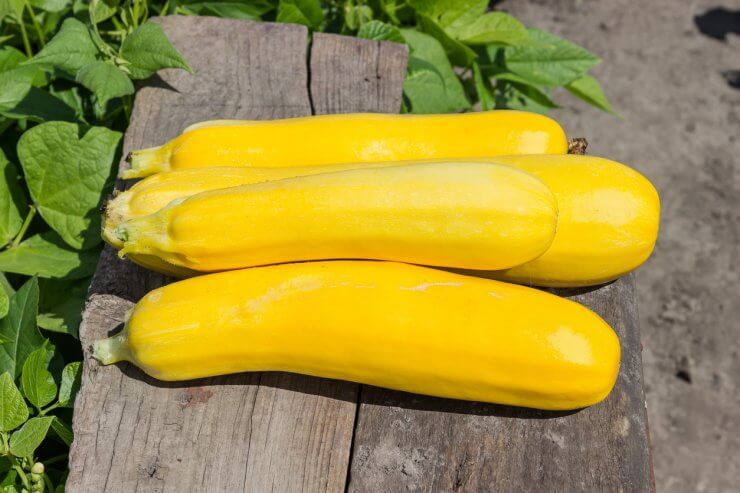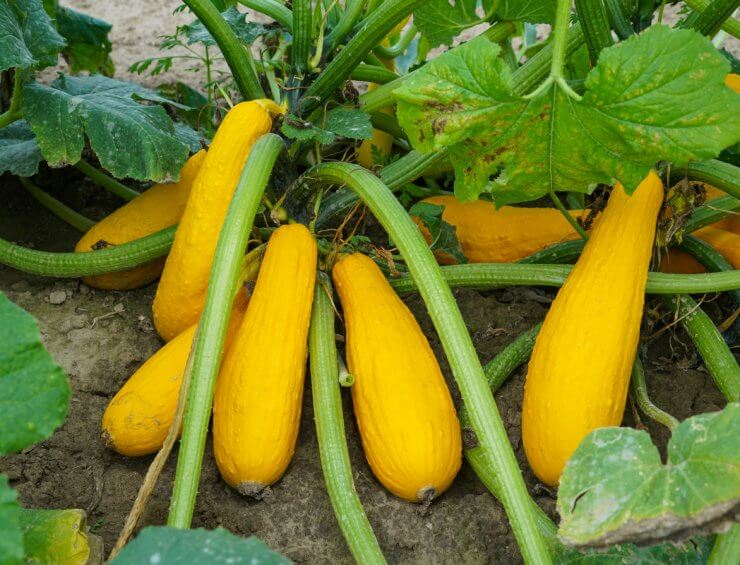
Look, let’s not beat around the bush (or the squash vine, if you will) – our summers are getting hotter. While you’re sweating through your garden hat and chugging iced tea like it’s going out of style, your summer squash might be staging a dramatic death scene worthy of a horticultural soap opera. But fear not, my wilting friends! There exists a rebel alliance of heat-resistant heirloom squashes that have been quietly laughing in the face of climate change since before it was trending on social media.
The Great Squash Resistance Movement
Think of heat-resistant heirloom varieties as the botanical equivalent of that friend who wears a sweater in 90-degree weather and claims they “don’t feel hot.” These genetic overachievers have been dealing with scorching conditions since your great-grandma’s garden and have the evolutionary receipts to prove it.
Unlike their delicate hybrid cousins (bless their hearts) that collapse at the first sign of a heatwave, these old-school varieties have been naturally selected for generations to handle Mother Nature’s mood swings. They’re the Keith Richards of the vegetable world – somehow thriving despite all odds.
USDA Zone Matchmaking: Finding Your Squash Soulmate
Before we dive into the varieties that will survive your region’s personal impression of the surface of the sun, let’s talk zone-specific needs. Because nothing says “garden failure” quite like trying to grow a Desert Southwest variety in the humid Southeast (spoiler alert: fungal party incoming).
Zones 3-4: The “Summer? What Summer?” Zones
You northern gardeners might be thinking, “Heat resistance? I’m still waiting for it to hit 75 degrees!” Fair point. But climate change is coming for you too, bringing wild temperature fluctuations that can shock even cold-adapted plants.
For these zones, focus on:
- Cocozelle – An Italian heirloom zucchini that matures quickly (perfect for short seasons) but handles surprise heatwaves like a champ.
- Black Beauty – Yes, this classic has survived since 1927 for good reason. It matures in just 50 days, giving you plenty of harvest before potential late-summer heat.
- Round Nice – This French heirloom resembles a green baseball and develops surprisingly sturdy foliage that withstands temperature swings.
Plant these varieties after soil temperatures reach 65°F, and consider using black plastic to warm soil early. The goal here isn’t just heat resistance but rather climate volatility resistance – these varieties roll with the weather punches.
Zones 5-7: The “Is This Spring or Summer or Both?” Zones
The middle zones experience the garden equivalent of wardrobe confusion – freezing in the morning, sweltering by afternoon. Your squash needs to be equally flexible.
- Tromboncino – This Italian heirloom looks like a trombone (hence the name, you clever gardener, you) and can be harvested as summer squash or left to mature into winter squash. Its vigorous vines and deeply lobed leaves maximize sun protection while allowing airflow.
- Tatume – A Mexican heirloom that’s been dealing with heat since before air conditioning was invented. Round, speckled fruits grow on drought-resistant vines that just. keep. producing.
- Yellow Crookneck – An Appalachian classic that’s been handling humid heat since the 1700s. The slightly warty skin is actually a feature, not a bug – it helps protect against scorching.
For these zones, succession planting every 3-4 weeks ensures you’ll have plants at different growth stages when the inevitable heatwave hits.
Zones 8-10: The “Is This Planet Actually Mercury?” Zones
Welcome to gardening on the sun! Southern gardeners, you’re on the front lines of climate change gardening, and you need squash varieties that basically wear SPF 1000.
- Luffa – Yes, the same plant that makes your shower scrubbie! This heat-loving heirloom produces edible squash when young and can literally take 100°F+ temperatures while asking for more.
- Calabacita (also called Tatume in some regions) – This Mexican/Central American heirloom has been thriving in desert conditions for centuries. It’s the cactus of the squash world.
- Cuban Squash (Calabaza) – While technically a winter squash, it’s grown year-round in its native Caribbean climate. Young fruits can be harvested and used like summer squash. The sprawling vines create their own shade microclimate.
- Moschata varieties – While most summer squash are Cucurbita pepo, looking to C. moschata varieties (traditionally winter squash) for young-harvest options gives you built-in heat and pest resistance.
In these zones, plant in February/March for spring crops and again in late summer for fall harvests, strategically skipping the most brutal summer weeks.

Survival Tactics: Because Even Tough Squash Need Help
Even these climate-defying super-squash appreciate a gardener’s helping hand when the thermometer explodes. Consider these heat-mitigation strategies:
- Afternoon shade – The squash equivalent of a beach umbrella. Use 30% shade cloth or plant on the east side of taller crops.
- Deep mulch – Think of this as the squash spa treatment. A 3-4 inch layer of straw or leaf mulch keeps roots a cool 10-15°F cooler than bare soil.
- Delayed or accelerated planting – Work around heat, not through it. Either plant ultra-early (8-10 weeks before last frost for transplants) or wait until late summer for fall crops.
- Hydration strategies – Drip irrigation or ollas (buried clay pots) deliver water directly to roots without wetting foliage, reducing fungal issues that compound heat stress.
Beyond Survival: When Squash Thrives Despite Your Weather App’s Red Alerts
The true magic happens when you match the right variety to your zone AND provide appropriate support. That’s when you’ll witness summer squash that doesn’t just survive but produces enough to make your neighbors hide when they see you coming with another basket of zucchini.
Look for local seed-saving networks in your region – they often maintain heirloom varieties specifically adapted to your local climate quirks. These hyperlocal varieties often don’t make it into seed catalogs but can be the secret weapon in your garden arsenal.

The Future of Heat-Resistant Squash: Seed Saving as Climate Activism
Every time you save seeds from plants that performed well during heat waves, you’re participating in a form of climate adaptation. Select fruits from plants that:
- Continued flowering during high temperatures
- Maintained leaf health without excessive wilting
- Produced during temperature extremes
By selecting seeds from your highest performers year after year, you’re essentially creating your own heat-resistant heirloom – a living legacy for future gardeners who will deal with even more climate challenges.
So while the thermometer climbs and weather patterns throw tantrums, take comfort in your rebel squash alliance – those botanical warriors that have weathered centuries of climate shifts and still show up to produce dinner. With the right varieties matched to your zone and a few clever gardening strategies, you can harvest summer squash while other garden plants wilt into dramatic despair.
Remember: in the great climate garden challenge, it’s not about avoiding the heat – it’s about finding plants that have been laughing at it for generations. If you want to learn more about how to grow summer squash, read our Summer Squash Gardening Guide!
Which types of summer squash perform well for you?


 Previous
Previous


This article provides links to some of our favorite seed companies.
https://foodgardening.mequoda.com/daily/vegetable-gardening/free-seed-catalogs-for-veggie-gardeners/
P.S.
Or maybe Heirloom is who I mean. I guess I’m confused.
I’ve never ordered seeds. I hear Heritage is the best, but is it under Heritage, or do companies add their own name to this? I’d like to find a reputable source for seeds, but don’t know how to find them. HELP!